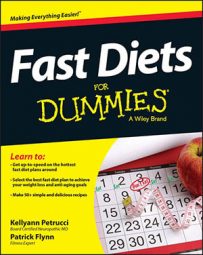Fasted exercise is the most potent fat burner on the planet. More potent than any diet pill, safer too, and much more economical. If you want to lose weight more effectively, then combining fasting with exercise will satisfy you.
To burn fat and ultimately lose weight, combine high-intensity exercise (such as heavy weightlifting and metabolic conditioning) with low-intensity exercise (such as walking and hiking), in that order while in a fasted state.
The reasoning is simple. High-intensity exercise, primarily fueled by carbohydrates and not fat, serves the useful purpose of releasing fatty acids into the bloodstream, where they can then be oxidized (burned off). This releasing of fatty acids is in large part due to the adrenaline response you receive from high-intensity bouts of exercise. Sprinting is a good example.
After you complete your high intensity workout session, which should typically last no longer than 30 minutes, you should immediately enter into a form of low intensity exercise. Downshifting from high intensity to low intensity allows your body to continue to burn the aforementioned fatty acids, because fat, not carbs, fuels low intensity aerobic activity.
This biological trickery, if you can call it that, is all you need. It doesn't need to be complicated. For example, 20 minutes of sprints followed by 30 to 40 minutes of brisk walking is effective for hacking fat right off the body — of course if it’s done while in a fasted state.
If you're looking for something that is a little lower impact, you can perform kettlebell swings, on and off, for 20 minutes. Try 15 seconds on, 15 seconds off, doing as many swings in each 15-second working block as you can with good form. It's brutal, but effective. Be sure to follow with a brisk walk as well.
To further assist you, here is a brief list of high-intensity movements.
Dead lifts
Goblet squats
Kettlebell swings
Pull-ups
Push-ups
Sprinting
Turkish get-ups
Intensity isn't necessarily related to how much you sweat. Perceived exertion is one measure of intensity, for sure, but you should also consider other forms. The amount of weight you lift is also a form of intensity. More weight means more intensity.
So, although lifting a heavy load for one to three reps at a time probably won't leave you huffing or puffing, it still counts as a form of intense exercise, because it still imparts a large amount of stress on the system.
After you do your high-intensity exercise, you'll want to do a low-intensity activity (for between 30 to 60 minutes) to help the fat-burning process. Here is a brief list of low-intensity activities:
Biking/cycling
Engaging in most recreational sports
Hiking
Playing Frisbee
Swimming
Walking
Don't go too hard with these low-intensity activities or else they won't be low intensity anymore. Remember, lightly keep on the move, have some fun, and let loose a little bit. At any given time you should be able to talk during these low-intensity activities, because it gives you a good idea that you're keeping it at the right intensity. If you're too winded to speak, then ease up a bit.

